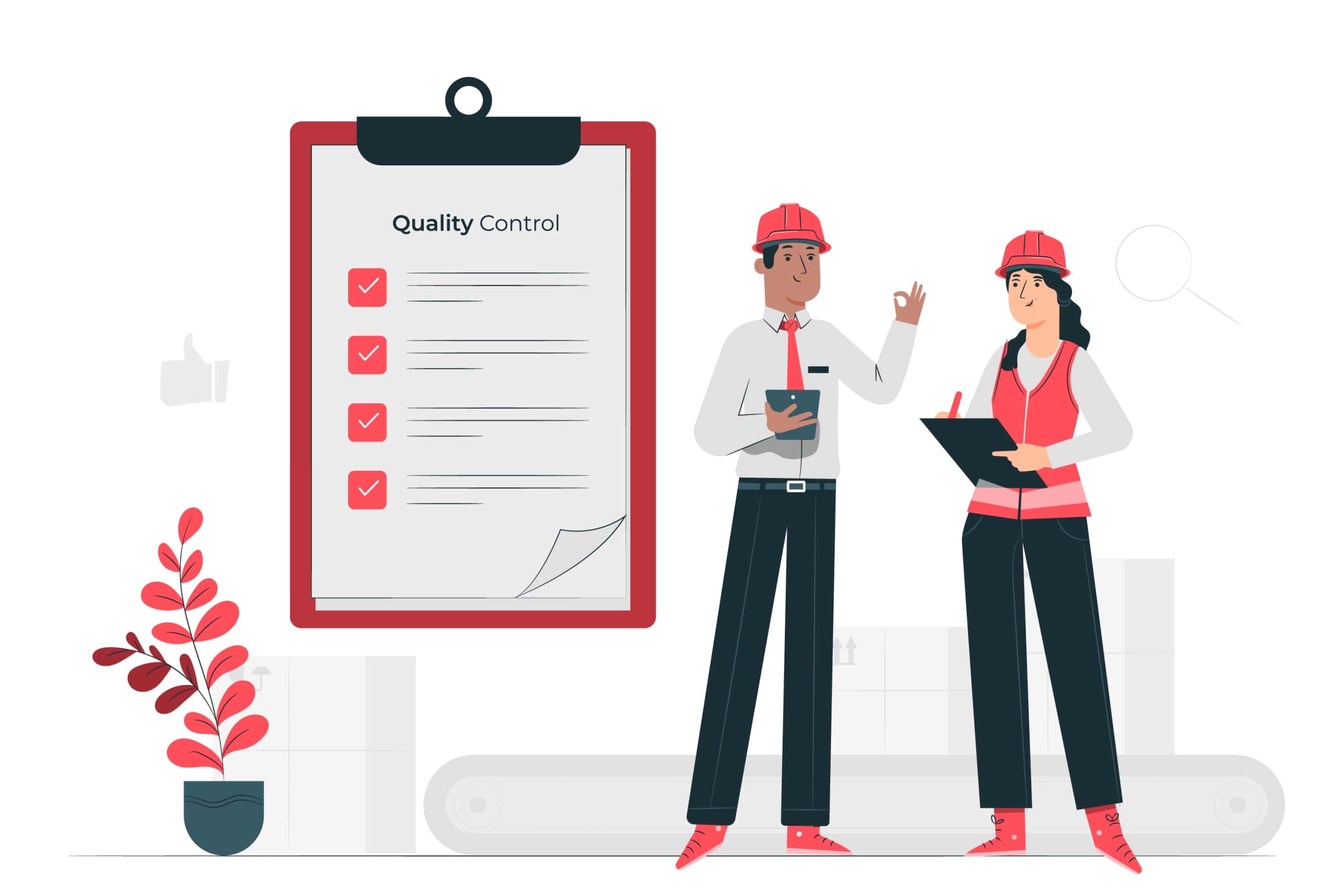1. Daily Maintenance: Immediate Attention to Critical Components
The foundation of a properly operating wet wipes machine is daily maintenance, which guarantees seamless operation and reduces the possibility of unplanned malfunctions. You may save minor problems from developing into expensive repairs or production delays by setting aside a little time each day to examine and maintain important components. Some crucial everyday chores to include in your maintenance regimen are listed below:
a. Lubricating Moving Components
Throughout operation, a wet wipes machine’s gears, rollers, and shafts encounter continuous friction. These parts can deteriorate rapidly without enough lubrication, which could result in malfunctions and inefficiencies. Apply the lubricants that the manufacturer recommends daily to these locations, being sure to cover them evenly to reduce friction and increase the parts’ lifespan. If this step is skipped, the component may overheat, make grinding noises, or perhaps fail.
b. Conveyor belt inspection
Conveyor belts are essential for moving raw materials and completed goods throughout the wet wipes manufacturing process. To find rips, frayed edges, or misalignment that might interrupt manufacturing flow, daily checks are essential. To maintain the belt’s smooth operation, adjust the tension if too much slack is found. Your manufacturing line runs smoothly and effectively thanks to routine inspections and prompt modifications.
c. Clear Cameras and Sensors
To ensure precise cutting, folding, and packing, modern wet wipes frequently rely on sensors and cameras for quality control. However, residue from the production process, moisture, or dust can impede these components. Maintaining their functionality requires daily cleaning with non-abrasive chemicals. A clear camera lens improves the precision of product examination, while a clean sensor guarantees accurate readings. Ignoring this duty might result in manufacturing problems like improper fold patterns or uneven cuts, which can eventually lower the quality of the final product.
Establishing daily maintenance as an essential component of your routine lays the groundwork for long-term equipment dependability. Time, money, and worry may be significantly reduced tomorrow with little, regular effort now.
2. Weekly Maintenance: Addressing Minor Wear and Tear
Weekly maintenance addresses minor wear and tear that may build over time in a more thorough manner than daily maintenance, which concentrates on urgent care. It is a chance to carefully examine the systems and parts of the wet wipes machine to make sure everything is operating effectively and correctly. By setting aside time every week for these chores, you may find and fix possible problems before they become more serious and prolong the life of your computer.
a. Evaluate the pneumatic systems.
The operation of several processes in wet wipes machines, including folding units and sealing equipment, depends heavily on pneumatic systems. Hoses and connectors may have minor leaks or wear over time, which lowers system efficiency. Examine any pneumatic hoses and fittings for obvious wear, cracks, or loose connections during weekly maintenance. If required, check for air leaks with soapy water. In addition to preserving the machine’s functionality, maintaining enough air pressure and secure connections lowers the energy usage brought on by air leaks.
b. Tighten the screws
Over time, bolts, screws, and other fasteners may loosen due to the continuous movement and vibration that occurs during machine operation. If this small problem is not addressed, it may result in misaligned parts or even mechanical breakdowns. Maintaining the stability of the machine’s structure and avoiding needless downtime requires a weekly check to tighten all fasteners. For some parts, using a torque wrench guarantees that fasteners are not overtightened or under-secured.
c. Examine the electrical parts
Wet wipes machines’ electrical systems are essential to their effective functioning since they drive a variety of sensors, motors, and automated functions. Wires, plugs, and connectors should all be inspected once a week for wear, fraying, or overheating. Any broken wires should be replaced right away to avoid any safety risks or possible electrical failures. Additionally, keep an eye out for any indications of loose connections or burned-out fuses that might interfere with power flow. Future bigger, more expensive issues can be avoided with a straightforward but comprehensive electrical examination.
The slight wear and tear that comes with frequent machine usage may be addressed by putting these weekly maintenance procedures into practice. This preventative measure guarantees peak performance, lowers the possibility of unplanned malfunctions, and extends the life of your wet wipes machine. Weekly maintenance keeps your manufacturing process uninterrupted and operating well, making it an investment in efficiency and dependability.
3. Monthly Maintenance: Thorough Inspection of Core Systems
Monthly maintenance gives you the chance to examine your wet wipes machine’s fundamental systems in greater detail and take care of sections that need less frequent but more thorough care. You may find underlying problems, increase productivity, and ensure constant production quality by setting aside time to carefully check and service important components. By being proactive, you may prevent the cumulative effects of minor wear and tear and guarantee that your equipment runs at its peak efficiency.
a. Assess Cutting Systems
One of the most important parts of a wet wipes machine is the cutting mechanism, which provides clean, accurate cuts for individual wipes or packing materials. Blades and perforators may dull or wear unevenly over time, resulting in uneven cuts, sharp edges, or material waste. The blades should have their symmetry and sharpness checked once a month. As advised by the manufacturer, replace or sharpen them if they exhibit wear. Maintaining sharp cutting tools not only enhances the quality of the final product but also lessens machine strain.
b. Check Folding Unit Alignment
A wet wipes machine’s folding units are essential to producing clean, consistently sized wipes. Uneven folds from misaligned folding plates or guides might affect the product’s usage and appearance. Make sure the folding units are aligned during monthly maintenance by running test runs and paying close attention to the folds. Recalibrate the guides and plates according to the wet wipes machine’s specifications if disparities are observed. This process reduces consumer complaints and guarantees that your product satisfies quality requirements.
c. Examine gearboxes and drive motors
Your wet wipes machine’s drive motors and gearboxes are its main power source, distributing energy to all of its moving elements. These parts may wear out, overheat, or leak oil over time, which might reduce their longevity and effectiveness. Checking for obvious leaks, strange noises, or vibrations should be part of monthly inspections. Make sure the lubricant is clear and debris-free, and that the gearbox’s oil levels are sufficient. To avoid interruptions in operation, tighten loose connections and replace any worn-out components. Maintaining constant machine performance and extending the lifespan of these systems requires regular upkeep.
The Benefits of Regular Upkeep
You may address the most serious problems that might not be apparent during daily or weekly inspections by concentrating on the key systems during monthly maintenance. This methodical technique ensures smooth operations and high-quality manufacturing by preventing the machine’s essential components from gradually degrading. Maintaining the dependability, effectiveness, and profitability of your wet wipes production line through monthly maintenance is not only a preventative measure; it is a strategic practice.
4. Quarterly Maintenance: Comprehensive System Overhaul
To guarantee optimal performance, quarterly maintenance entails a thorough inspection and service of your wet wipes machine, with an emphasis on a comprehensive system overhaul. This maintenance phase, in contrast to daily or weekly chores, is intended to address more significant, systemic problems and guarantee that the equipment continues to operate at its best. You can extend the machine’s lifespan and drastically lower the chance of expensive repairs and downtime by allocating time and resources every three months.
a. Thoroughly Clean the Device
Even with frequent cleaning efforts, manufacturing materials, dust, and residue can eventually build up in hard-to-reach regions of the machine. To get rid of accumulated dirt that might impair the functionality of sensors, conveyor belts, and moving parts, a comprehensive cleaning every three months is necessary. All parts should be carefully cleaned using non-corrosive cleaning solutions and compressed air, with particular attention given to regions that are likely to accumulate residues, such as folding units, and sealing mechanisms. In addition to being more effective, clean equipment lowers the possibility of contamination during manufacturing.
b. Change the Wearable Components
Due to frequent usage, several parts—like nozzles, bearings, and seals—are prone to natural wear and tear. The best time to check these items and replace them if needed is during quarterly maintenance. Inefficiencies like leaks, inconsistent performance, or slowed manufacturing speed might result from worn-out components. You may prevent more serious mechanical issues and guarantee the smooth operation of the equipment by replacing these parts regularly.
c. Adjust Systems and Update Software
Software upgrades and system recalibrations are essential for preserving accuracy and efficiency if your wet wipes machine has sophisticated automation capabilities. Software updates are frequently released by manufacturers to fix issues or enhance equipment performance. To ensure precise folding, cutting, and packing, make sure your machine’s software is up to date and adjust its sensors, cameras, and control systems. Frequent upgrades also assist your equipment in adjusting to changing standards or production needs.
The Advantages of Regular Maintenance
Regular maintenance gives you a chance to evaluate your wet wipes machine’s general condition and ensure all of its systems are functioning properly. It enables proactive problem-solving, seeing possible problems before they become serious enough to require costly repairs or interfere with operations. This thorough repair also guarantees that your equipment will continue to satisfy production objectives without sacrificing efficiency or quality.
A smart move for any company that produces wet wipes is to invest in quarterly maintenance. In the long run, it saves money and increases productivity by lowering downtime, maintaining consistent product quality, and extending the lifespan of your equipment.
5. Annual Maintenance: Professional Servicing
The foundation of a long-term plan to guarantee the dependability and effectiveness of your wet wipes machine is annual maintenance. Annual service necessitates a more thorough and skilled approach, whereas daily, weekly, and quarterly maintenance takes care of ordinary and mild wear. Now is the moment to hire qualified specialists to perform a thorough assessment of your equipment. In addition to returning the system to peak performance, yearly maintenance offers suggestions for future enhancements and improvements.
a. Inspection by the Manufacturer
An essential part of yearly maintenance is a professional examination conducted by the machine’s manufacturer or an approved service provider. These professionals may spot problems that might not be apparent during normal inspections since they have a thorough grasp of the machine’s architecture. From electrical circuits to mechanical systems, they examine every component to make sure that it satisfies the performance requirements set by the manufacturer. This expert touch ensures that your equipment keeps working as it should and frequently offers guidance on efficiency-maintenance best practices.
b. Comprehensive System Diagnostics
During yearly maintenance, sophisticated diagnostic techniques like vibration analysis and thermal imaging are frequently used to evaluate the machine’s general health. Vibration analysis finds early indications of wear in motors, gearboxes, and other moving parts, while thermal imaging assists in locating hot parts or possible electrical problems. Technicians may identify hidden issues and fix them before they cause significant breakdowns by utilizing these technologies. To guarantee continuous production, a comprehensive diagnostic assessment is a preventative step.
c. Change Important Parts
Even if they seem to be working properly, several important parts of a wet wipes machine may need to be replaced after prolonged usage. This comprises high-wear components like guiding rollers or sealing elements, as well as motors, belts, and blades. Your equipment will operate dependably in the upcoming year if these parts are replaced during yearly maintenance. It is more cost-effective to address such replacements during a scheduled service because delaying them might result in unplanned failures and expensive downtime.
d. Evaluate Production Results
A great chance to assess the wet wipes machine’s quality and manufacturing output over the previous year is during annual maintenance. Examine if the wet wipes machine continues to fulfill performance standards or whether efficiency or product quality has noticeably decreased. By changing the wet wipes machine’s settings, swapping out old parts, or even switching to newer technology, this assessment can assist in identifying areas that need improvement.
The Significance of Annual Maintenance
Annual maintenance is a thorough reset that guarantees your equipment is prepared to handle the demands of the upcoming year, going beyond normal care. It keeps high standards of product quality, maximizes performance, and reduces the chance of unanticipated failures. Additionally, hiring qualified technicians offers insightful information on new developments in technology, trends, and updates that can improve the performance of your equipment.
By prolonging the life of your wet wipes machine, lowering maintenance costs, and preserving constant output quality, this investment in expert service pays off. You can make sure that your equipment continues to be a dependable foundation of your manufacturing operations by including yearly maintenance in your overall plan.
6. Preventive Maintenance Tips
The proactive goal of preventive maintenance is to deal with possible problems before they interfere with output. You can prolong the life of your wet wipes machine, avoid expensive repairs, and ensure consistent product quality by putting in place a strong preventative maintenance plan. These suggestions are doable actions that manufacturers may take to keep ahead of typical issues and guarantee continuous functioning.
a. Keep a thorough maintenance record
A thorough maintenance journal is among the best resources for preventative maintenance. All maintenance procedures, including inspections, fixes, and replacements, should be documented in this document. By keeping track of this data, you may see trends, anticipate when certain components might require maintenance, and plan preventative measures appropriately. A well-kept journal guarantees that no part is missed and aids specialists in promptly identifying reoccurring problems.
b. Maintenance Workers and Train Operators
Your team’s degree of expertise and proficiency is vital to preventative maintenance. Make sure that technicians and operators have received extensive training on the particular needs of your wet wipes equipment. This entails knowing how to identify wear early on, make simple modifications, and adhere to the manufacturer’s maintenance recommendations. A skilled crew can handle little problems before they become more serious, cutting down on maintenance expenses and downtime.
c. Plan Frequent Inspections
The core of preventive maintenance is the routine, planned examination of vital parts. Make a maintenance schedule that is customized to your wet wipes machine’s needs and includes daily, weekly, monthly, and yearly inspections. Sensors, belts, and blades that are subject to excessive wear should be given priority in this program. Frequent inspections enable you to identify and resolve problems such as material accumulation, lubrication failures, or misalignment before they affect output.
d. Keep necessary spare parts on hand
One crucial component of preventative maintenance is keeping a supply of vital replacement parts on hand. If components like blades, sensors, or seals are easily accessible when needed, downtime may be greatly decreased. Collaborate with the maker of your equipment to determine which parts need to be changed the most frequently and keep an inventory. This readiness ensures that your manufacturing line stays running by reducing the waiting time for replacements.
e. Adhere to the manufacturer’s instructions
Every wet wipes machine has unique maintenance and operation specifications. Following the wet wipes machine manufacturer’s instructions guarantees that your preventative maintenance procedures complement the special characteristics of the equipment. These instructions frequently contain suggested cleaning products, lubrication plans, and part replacement dates. Ignoring these guidelines may result in needless wear or void warranties, which will ultimately raise expenses.
f. Track Performance Indicators
You may track the wet wipes machine’s performance in real-time by integrating data monitoring into your preventative maintenance plan. Utilize integrated sensors and automation technologies to keep an eye on important parameters like mistake rates, energy usage, and production speed. Unexpected shifts in these indicators may point to possible problems, allowing you to take immediate action. Your maintenance efforts will be more dependable and efficient with this data-driven strategy.
g. Make Seasonal Adjustment Plans
Make the necessary adjustments to your maintenance procedures if your production levels vary seasonally. Components may wear down more quickly due to increased production demands, necessitating more frequent inspections and replacements. On the other hand, more extensive maintenance jobs that are more difficult to plan during periods of high output can be done during slower times.
The Significance of Preventive Maintenance
Effective manufacturing processes are based on preventive maintenance. You may prolong equipment life, minimize unplanned breakdowns, and improve overall performance by emphasizing routine maintenance and early issue identification. By putting these preventative maintenance suggestions into practice, wet wipes manufacturers may save time and money while upholding high production standards and cultivating a culture of proactive care. Your wet wipes machine may be a dependable asset for many years to come with constant work.







